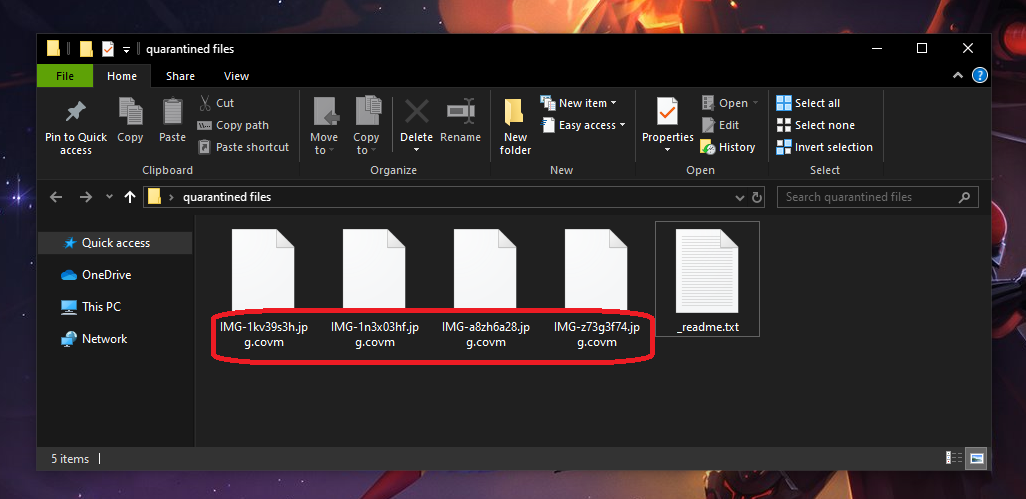Covm
Covm is a type of malicious program that experts classify as file-encrypting ransomware. Covm is highly dangerous and can potentially result in permanent data loss for its victims.

Ransomware is generally considered to be among the most harmful and devastating types of malicious code out there. And the reason for this is that oftentimes there may not even be a possible solution for its encryption. Not even sending the amount that the hackers demand for the necessary decryption key will necessarily guarantee that you can regain access to your data again. Encryption is tricky business and mixups can and do happen, so there’s no telling that the cybercriminals will send you the correct key, should you choose to pay them.
On the other hand, there are alternative means of getting your files back – and we strongly encourage you to make use of them. In fact, we have a list of possible ways that you can circumvent the ransom payment in order to get hold of your files again, and it’s included in the second part of the removal guide below. While they may or may not be effective in each and every Covm attack, they are certainly better than straight away opting for the ransom payment. However, no matter what course of action you choose in regards to your files, one thing is for sure: you must absolutely remove Covm from your system before attempting any data recovery tactic. This will ensure that whatever files your manage to save don’t get encrypted a second time. And instructions on how to remove Covm can be found in the same guide, just below this post.
The Covm virus
Ransomware like the Covm virus is particularly well-equipped when it comes to dodging antivirus software. The Covm virus can easily operate under the radar of most antivirus programs without activating a response from them.
This is because of the nature of how Covm and similar software operates. The thing is that encryption is not a process that directly harms, corrupts or in any other way damages the files that it is applied to. Encryption, as is well known, is simply a data protection technique that is used to shield information from unwanted eyes. Only in the case of ransomware viruses like Covm, cybercriminals have come up with the ingenious way in which to use this otherwise helpful process for their personal benefit and at the expense of unsuspecting computer users.
This only goes to say that the genuinely reliable way to protect yourself from future ransomware attacks is by keeping copies of your most important data on a separate drive or cloud service. That way, even if an infection occurs, all you will have to worry about is removing it. And you will have copies of the encrypted files stored someplace safe where you can access them again.
The Covm file extension
The Covm file extension is added to each and every one of the files that the virus encrypts, replacing their regular one. So basically, the Covm file extension prevents other software from recognizing the file format.
SUMMARY:
Remove Covm Ransomware
You are dealing with a ransomware infection that can restore itself unless you remove its core files. We are sending you to another page with a removal guide that gets regularly updated. It covers in-depth instructions on how to:
1. Locate and scan malicious processes in your task manager.
2. Identify in your Control panel any programs installed with the malware, and how to remove them. Search Marquis is a high-profile hijacker that gets installed with a lot of malware.
3. How to decrypt and recover your encrypted files (if it is currently possible). You can find the removal guide here.

Leave a Reply